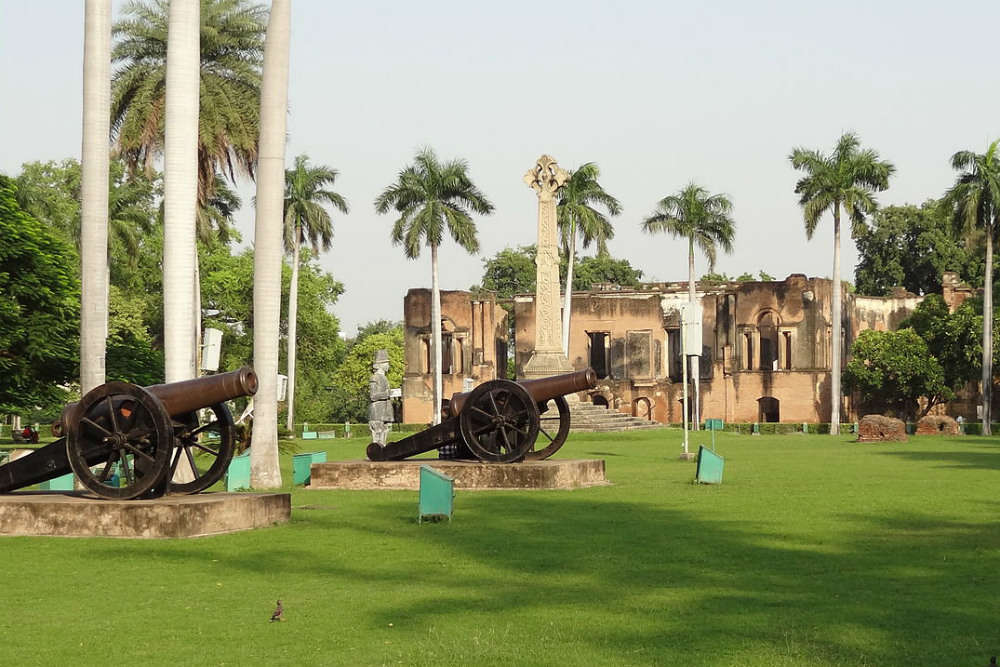
I saw Imambara (big and small), Rumi Darwaza, Dilkhusha Kothi, Chattar Manzil, Hussainabad Clock Tower, several parks – such as Gyaneshwar Mishra Park, Amrapali Water Park, Ram Manohar Lohia Park, Four Seasons Water Park. Gomti Park and Ambedkar Park. In addition, Nawab Wajid Ali Shah’s Zoo, Indira Gandhi Planetarium, Jama Masjid. Lucknow Chikan and other fancy items for buying Aminabad, Chowk and Hazratganj Bazar, State Museum, Chandrika Devi Temple, Satkhand, Constantia House and of course British Residency. I calculated that it is not possible to visit so many places in just three days if you are busy with food only in famous restaurants. But where to look and where not to see, on what basis can it be sifted?
I decided that what I really needed to do was learn how to do it right. At first the parks were left out. The names of historical places got a place in the ‘priority list’. I looked at him first ‘British Residency‘

When the capital of Ayodhya was shifted from Faizabad to Lucknow in 175, Nawab Sujauddaula of Ayodhya agreed to accommodate a British citizen at the Lucknow court in accordance with an agreement with the British East India Company. It was on his initiative that the construction of this English settlement in the center of the city began. It takes about five years to complete. During the reign of Nawab Sadat Ali Khan in 1800, the building was used by the English for their habitation. Nawab Sadat Ali Khan also built the Bailey Gate in honor of Captain John Bailey of the British Army stationed in Lucknow, the main entrance to the residence. The English sat quietly, safely. But where is the lasting happiness! Just as a bird in a cage suddenly flutters its wings in the blue sky, or a seemingly weak and quiet captive elephant with an iron fetter on its long legs suddenly breaks all bonds one day realizing its own strength – just as the people of a subjugated country suffer a century of slavery He later declared a sudden revolt.

According to some historians, the Sepoy Mutiny against the British East India Company on 10 May 1857 was India’s first war of independence. Gradually the revolt reached its climax in present day Uttar Pradesh, Bihar, northern Madhya Pradesh and Delhi. From 30 May to 26 November, the fire of rebellion spread in Lucknow. The angry sepoys, led by the exiled Nawab Wajid Ali Shah of Oudh, Birangana Begum Hazrat Mahal, 11-year-old sons Birjis Kadr, Barkat Ahmed and Ahmedullah Shah, attacked the British in the British Residency. The walls of the residency were shattered by artillery and gunfire. Fearing for their lives, the English were forced to flee the shelter. After the rebellion subsided, however, the residents returned to the residency. However, the English thought that the Union Jack would be permanently at the head of their abode, where the tricolor flag of independent India is flying with pride today. Every time I look at him, there is an unexplained pain in my chest. The first conservation work of this building started in 1920 It is currently overseen by the Asiatic Society.

I was a little disappointed to find out why there is so much evidence of history hidden around the city of Lucknow centered around this English-built residence, which I have not been able to find on the pages of a textbook for so long. Of course, there were many incidents in the air of the freedom movement in India at that time, which have gradually been buried in the dust of oblivion. It may be impossible for a printed book to retain its overall form.
Lifestyle News in Bengali, লাইফস্টাইল খবর, Health Tips, Fashion Trends and Tips in Bangla
2021-06-17 12:04:11
Source link





